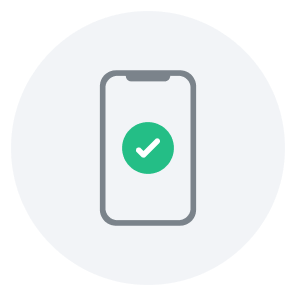Investigation On The Behavior And Related Neuro-Electrochemistry Of Potential Medications For The Treatment Of Substance Use Disorders.
对治疗物质使用障碍的潜在药物的行为和相关神经电化学的调查。
基本信息
- 批准号:9353059
- 负责人:
- 金额:$ 89.07万
- 依托单位:
- 依托单位国家:美国
- 项目类别:
- 财政年份:
- 资助国家:美国
- 起止时间:至
- 项目状态:未结题
- 来源:
- 关键词:AcuteAgonistAlcohol abuseAlcohol consumptionAlcohol dependenceAreaAttenuatedAutoreceptorsBackBehaviorBehavior monitoringBehavioralBrainBrain DiseasesCannabisCarrier ProteinsChemosensitizationClinical ResearchClinical TrialsCocaineComorbidityDataDiseaseDopamineDopamine ReceptorDoseDrug AddictionDrug abuseDrug usageElectrochemistryEngineeringExposure toFoodGoalsHeroinHourHumanImplantInjection of therapeutic agentInvestigationKnock-outLaboratoriesLeadLearningMediatingMedicalMembraneMetabolic PathwayMethylphenidateMicrodialysisModafinilModelingMonitorMotor ActivityMusNaloxoneNaltrexoneNerveNeurobiologyNeuronsNeuropeptidesNeurotransmittersNucleus AccumbensOpioidOutcomeOxytocinPathologicPatientsPharmaceutical PreparationsPhysiologicalPlayPopulationProceduresProteinsPsychostimulant dependenceRattusReportingResearch Project GrantsRewardsRoleSalineScanningScheduleSelf AdministrationSignal TransductionSleep DisordersStimulusSubstance Use DisorderSynapsesSynaptic ReceptorsSystemTLR4 geneTestingTherapeuticTimeTrainingVenousWorkanalogattenuationbasecocaine usedopamine systemdopamine transporterdrug discriminationdrug of abusedrug testingearly onsetenantiomerfeedingin vivointerestintraperitonealintravenous injectionmemory processmethamphetamine useneuroadaptationneurochemistryopioid abuseopioid use disorderpre-clinicalpreclinical studypsychostimulantregional differencereinforced behaviorreinforcerremifentanilresponsereuptakesocial stressstimulant abuse
项目摘要
Clinical studies suggest that the most favorable outcomes from clinical trials with MOD administered as a psychostimulant use disorder treatment were seen in selected subpopulations of patients (e.g. cocaine addicts who did not show comorbidity with abuse of alcohol). We have provided recent evidence that the DAT is MODs main pharmacologic target. Thus, like cocaine and other abused psychostimulants, MOD reduces synaptic clearance of DA by inhibiting dopamine reuptake. However, the resulting stimulation of DA levels and the efficacy of MOD as a behavioral reinforcer are among the lowest in its class. Moreover, our results confirm that MOD does not work as a behavioral reinforcer in rats under different schedules of self-administration behavior in which abused psychostimulants demonstrate high levels of reinforcing efficacy. Recently, we have further explored the neurochemical and behavioral actions of MOD to better characterize its psychostimulant profile. Swiss-Webster mice were implanted with microdialysis probes in the NAS or NAC to evaluate changes in DA levels related to acute reinforcing actions of drugs of abuse. Additionally, subjective effects were studied in mice trained to discriminate 10 mg/kg cocaine (i.p.) from saline. MOD (17-300 mg/kg, i.p.) significantly increased NAS and NAC DA levels that at the highest doses reached 300% at 1 hour, and lasted >6 hours in duration. These elevated DA levels did not show statistically significant regional differences between the NAS and NAC. MOD produced cocaine-like subjective effects at 56-100 mg/kg when administered at 5 and 60 minutes before the start of the session, and enhanced cocaine effects when the two were administered in combination. Despite sharing subjective effects with cocaine, MODs psychostimulant profile was unique compared to that of cocaine. MOD had a lower potency and efficacy than cocaine in stimulating NAS DA. Additionally, the cocaine-like subjective effects of MOD were obtained at lower doses and earlier onset times than expected based on its dopaminergic effects. Our tests with MOD suggest that although inhibition of DA reuptake may be a primary mechanism underlying MODs therapeutic actions, non DA-dependent actions may be playing a role in its pharmacological profile. We are now investigating the potential of GAP-junctions to facilitate the effects of MOD on cocaines reinforcing actions. Thus even if MOD might provide useful as a treatment for specific addicted populations, effective medications for psychostimulant use disorders are still an unmet medical need.
Recently, the (+)-enantiomers of naloxone and naltrexone, identified as TLR4 antagonists, have been reported to attenuate preclinical indicators of both opioid and stimulant abuse. To further examine the potential of these compounds as drug-abuse treatments we extended the previous assessments to include a wider range of doses and procedures. We have tested the effects of administration of (+)-naloxone and (+)-naltrexone on the acute dopaminergic actions of cocaine and heroin determined by in vivo microdialysis; we have also tested these drugs on the reinforcing effects of cocaine and the opioid agonist, remifentanil, under intra-venous self-administration procedures, as well as on the subjective effects of cocaine determined by discriminative-stimulus effects in rats. We found that pretreatment with (+)-naloxone or (+)-naltrexone did not attenuate, and under certain conditions enhanced the stimulation of dopamine levels produced by cocaine or heroin in the NAS. Further, while an attenuation of either cocaine or remifentanil self-administration was obtained at the highest doses of (+)-naloxone and (+)-naltrexone, those doses also attenuated rates of food-maintained behaviors, indicating a lack of selectivity for behaviors reinforced with drug injections. Drug-discrimination studies failed to demonstrate a significant interaction of (+)-naloxone or (+)-naltrexone with the subjective effects of cocaine. Thus our studies do not confirm the suggested involvement of TLR4 antagonists as potential medications for cocaine or opioid use disorders. In particular, under a wide range of doses and experimental conditions, (+)-naloxone and (+)-naltrexone, did not specifically block neurochemical or behavioral abuse-related effects of cocaine or opioid agonists.
Another topic of interest has been suggested by reports that the neuropeptide oxytocin, which plays a role in reward, stress, social affiliation, learning, and memory processes, might also be a potential treatment for substance use disorders. The endogenous brain oxytocin system is altered after exposure to drugs of abuse. Preclinical studies have investigated whether oxytocin can reverse the neuroadaptations occurring with repeated drug and alcohol use. In addition, a few small clinical studies have been conducted in cocaine, cannabis, and alcohol dependent subjects. In our preclinical laboratories the dopaminergic effects of oxytocin pretreatments, given intranasal or intraperitoneal to rats, have been tested after intravenous injection with increasing doses of methylphenidate. While oxytocin given alone does not produce any significant change to DA levels in the NAS, it can elicit a greater methylphenidate-induced stimulation of dopamine as compared to methylphenidate alone. This effect might indicate a potentiation of methylphenidate effects. However, preliminary behavioral data show that oxytocin blunts the reinforcing effects of methylphenidate, a dose-dependent effect that shifts the entire dose response downward in self-administration procedures. These results suggest that oxytocin might be tested in humans as a potential pharmacologic treatment for psychostimulant dependence.
临床研究表明,在选定的患者亚群中可以看到,从MOD进行的临床试验中最有利的结果(例如,可卡因成瘾者没有表现出与滥用酒精的合并症)。我们最近提供的证据表明DAT是MODS的主要药理目标。因此,像可卡因和其他滥用精神刺激剂一样,MOD通过抑制多巴胺再摄取来降低DA的突触清除率。但是,由此产生的刺激DA水平和MOD作为行为增强剂的功效是其类别中最低的。此外,我们的结果证实,在不同的自我管理行为时期,MOD不能作为大鼠的行为增强剂,其中滥用的精神刺激物表现出高水平的增强功效。最近,我们进一步探讨了MOD的神经化学和行为作用,以更好地表征其精神刺激性的特征。将瑞士 - 韦伯斯特小鼠植入NAS或NAC中的微透析探针,以评估与急性加强滥用药物有关的DA水平的变化。另外,研究了在训练有素的小鼠中研究了主观作用,以区分10 mg/kg可卡因(i.p.)与盐水。 mod(17-300 mg/kg,i.p.)显着提高了NAS和NAC DA水平,在1小时时,最高剂量达到300%,持续时间持续> 6小时。 这些升高的DA水平并未显示NAS和NAC之间的统计学显着区域差异。在会议开始前的5和60分钟内给药时,MOD在56-100 mg/kg下产生类似可卡因的主观效应,并在组合组合使用两者时增强了可卡因效应。 尽管与可卡因具有主观影响,但与可卡因相比,MODS精神刺激症状是独一无二的。 MOD在刺激NAS DA中的效力和功效低于可卡因。 另外,根据其多巴胺能作用,在较低剂量和更早的发病时间下,MOD的可卡因样主观效应是获得的。我们使用MOD的测试表明,尽管抑制DA再摄取可能是MODS治疗作用的主要机制,但非依赖性作用可能在其药理特征中起作用。现在,我们正在研究间隙 - 缝合物的潜力,以促进Mod对可卡因增强作用的影响。因此,即使MOD可以作为特定上瘾的人群提供有用的治疗方法,但有效的心理刺激使用障碍药物仍然是未满足的医疗需求。
最近,据报道,纳洛酮和纳曲酮的映异构体据报道,据报是TLR4拮抗剂,可以减弱阿片类药物和刺激性滥用的临床前指标。 为了进一步研究这些化合物作为药物滥用治疗的潜力,我们扩展了先前的评估,以包括更广泛的剂量和程序。 我们已经测试了(+) - 纳洛酮和(+) - 纳曲酮对可卡因和海洛因急性多巴胺能作用的影响,由体内微透析确定。我们还测试了这些药物对可卡因和阿片类药物激动剂(Remifentanil)的增强作用,在内部内部的自我给药程序下,以及通过大鼠歧视性刺激效应确定的可卡因的主观效应。 我们发现使用(+) - 纳洛酮或(+) - 纳曲酮没有减弱,在某些条件下,可以增强NAS中可卡因或海洛因产生的多巴胺水平的刺激。 此外,虽然以最高剂量的(+) - 纳洛酮和(+) - 纳曲酮的剂量获得了可卡因或瑞芬太尼自我给药的衰减,但这些剂量也减弱了食物维护的行为的速度,表明对被药物注射的行为缺乏选择性。 药物歧视研究未能证明(+) - 纳洛酮或(+) - 纳曲酮与可卡因的主观效应的显着相互作用。 因此,我们的研究并未证实TLR4拮抗剂作为可卡因或阿片类药物使用障碍的潜在药物。特别是,在多种剂量和实验条件下,(+) - 纳洛酮和(+) - 纳曲酮,并未特异性地阻止可卡因或阿片类药物的神经化学或行为滥用相关的作用。
有报道称,在奖励,压力,社会隶属关系,学习和记忆过程中发挥作用的神经肽催产素也可能是对药物使用障碍的潜在治疗方法。暴露于滥用药物后,内源性脑催产素系统会改变。临床前研究已经研究了催产素是否可以逆转毒品和酒精饮酒的神经适应。此外,在可卡因,大麻和依赖酒精的受试者中进行了一些小的临床研究。 在我们的临床前实验室中,给定对大鼠的鼻内或腹膜内的催产素预处理的多巴胺能作用,在静脉注射后,随着剂量增加的甲基苯甲酸酯的增加后,已测试。虽然单独给出的催产素不会对NAS中的DA水平产生任何显着变化,但与单独的甲基苯甲酸酯相比,它可以引起更大的哌醋甲酯诱导的多巴胺刺激。这种作用可能表明哌醋甲酯作用的增强。然而,初步行为数据表明,催产素钝化了哌醋甲酯的增强作用,哌醋甲酯的增强作用是剂量依赖性的作用,在自我给药过程中会向下移动整个剂量反应。这些结果表明,可能在人类中测试了催产素,作为对精神刺激依赖性的潜在药理治疗。
项目成果
期刊论文数量(0)
专著数量(0)
科研奖励数量(0)
会议论文数量(0)
专利数量(0)
数据更新时间:{{ journalArticles.updateTime }}
{{
item.title }}
{{ item.translation_title }}
- DOI:
{{ item.doi }} - 发表时间:
{{ item.publish_year }} - 期刊:
- 影响因子:{{ item.factor }}
- 作者:
{{ item.authors }} - 通讯作者:
{{ item.author }}
数据更新时间:{{ journalArticles.updateTime }}
{{ item.title }}
- 作者:
{{ item.author }}
数据更新时间:{{ monograph.updateTime }}
{{ item.title }}
- 作者:
{{ item.author }}
数据更新时间:{{ sciAawards.updateTime }}
{{ item.title }}
- 作者:
{{ item.author }}
数据更新时间:{{ conferencePapers.updateTime }}
{{ item.title }}
- 作者:
{{ item.author }}
数据更新时间:{{ patent.updateTime }}
Gianluigi Tanda其他文献
Gianluigi Tanda的其他文献
{{
item.title }}
{{ item.translation_title }}
- DOI:
{{ item.doi }} - 发表时间:
{{ item.publish_year }} - 期刊:
- 影响因子:{{ item.factor }}
- 作者:
{{ item.authors }} - 通讯作者:
{{ item.author }}
{{ truncateString('Gianluigi Tanda', 18)}}的其他基金
Investigation On The Behavior And Related Neuro-Electrochemistry Of Potential Medications For The Treatment Of Substance Use Disorders.
对治疗物质使用障碍的潜在药物的行为和相关神经电化学的调查。
- 批准号:
10699661 - 财政年份:
- 资助金额:
$ 89.07万 - 项目类别:
Investigation On The Behavior And Related Neuro-Electrochemistry Of Potential Medications For The Treatment Of Substance Use Disorders.
对治疗物质使用障碍的潜在药物的行为和相关神经电化学的调查。
- 批准号:
10004434 - 财政年份:
- 资助金额:
$ 89.07万 - 项目类别:
Endocannabinoid and other brain receptor systems roles in neurochemical and reinforcing effects of abused drugs
内源性大麻素和其他大脑受体系统在神经化学和增强滥用药物作用中的作用
- 批准号:
10267545 - 财政年份:
- 资助金额:
$ 89.07万 - 项目类别:
Investigation On The Behavior And Related Neuro-Electrochemistry Of Potential Medications For The Treatment Of Substance Use Disorders.
对治疗物质使用障碍的潜在药物的行为和相关神经电化学的调查。
- 批准号:
9555600 - 财政年份:
- 资助金额:
$ 89.07万 - 项目类别:
Investigation On The Behavior And Related Neuro-Electrochemistry Of Potential Medications For The Treatment Of Substance Use Disorders.
对治疗物质使用障碍的潜在药物的行为和相关神经电化学的调查。
- 批准号:
10928578 - 财政年份:
- 资助金额:
$ 89.07万 - 项目类别:
Endocannabinoid roles in neurochemical and reinforcing effects of abused drugs
内源性大麻素在神经化学中的作用和增强滥用药物的作用
- 批准号:
10004430 - 财政年份:
- 资助金额:
$ 89.07万 - 项目类别:
Endocannabinoid roles in neurochemical and reinforcing effects of abused drugs
内源性大麻素在神经化学中的作用和增强滥用药物的作用
- 批准号:
9555598 - 财政年份:
- 资助金额:
$ 89.07万 - 项目类别:
Investigation On The Behavior And Related Neuro-Electrochemistry Of Potential Medications For The Treatment Of Substance Use Disorders.
对治疗物质使用障碍的潜在药物的行为和相关神经电化学的调查。
- 批准号:
10267557 - 财政年份:
- 资助金额:
$ 89.07万 - 项目类别:
相似国自然基金
探究FSP1激动剂在治疗肾缺血再灌注损伤中的分子机理与应用
- 批准号:82304600
- 批准年份:2023
- 资助金额:30 万元
- 项目类别:青年科学基金项目
新型IL2Rβγ激动剂逐级控释联合放疗对抗三阴性乳腺癌的作用及机制研究
- 批准号:82303819
- 批准年份:2023
- 资助金额:30 万元
- 项目类别:青年科学基金项目
基于OSMAC-GNPS分析策略的蚂蚱内生真菌Aspergillus sp.中新颖泛PPAR激动剂的发现及治疗NASH研究
- 批准号:82304340
- 批准年份:2023
- 资助金额:30 万元
- 项目类别:青年科学基金项目
负载自组装型非核苷类STING激动剂的亚精胺水凝胶用于抗肿瘤免疫治疗及机制研究
- 批准号:82303561
- 批准年份:2023
- 资助金额:30 万元
- 项目类别:青年科学基金项目
靶向SIRT3小分子激动剂调控三阴性乳腺癌细胞自噬和免疫微环境的机制研究
- 批准号:82373193
- 批准年份:2023
- 资助金额:49 万元
- 项目类别:面上项目
相似海外基金
S1PR1 agonistによる脳血液関門制御を介した脳梗塞の新規治療法開発
S1PR1激动剂调节血脑屏障治疗脑梗塞新方法的开发
- 批准号:
24K12256 - 财政年份:2024
- 资助金额:
$ 89.07万 - 项目类别:
Grant-in-Aid for Scientific Research (C)
AHR agonistによるSLE皮疹の新たな治療薬の開発
使用 AHR 激动剂开发治疗 SLE 皮疹的新疗法
- 批准号:
24K19176 - 财政年份:2024
- 资助金额:
$ 89.07万 - 项目类别:
Grant-in-Aid for Early-Career Scientists
Evaluation of a specific LXR/PPAR agonist for treatment of Alzheimer's disease
特定 LXR/PPAR 激动剂治疗阿尔茨海默病的评估
- 批准号:
10578068 - 财政年份:2023
- 资助金额:
$ 89.07万 - 项目类别:
AUGMENTING THE QUALITY AND DURATION OF THE IMMUNE RESPONSE WITH A NOVEL TLR2 AGONIST-ALUMINUM COMBINATION ADJUVANT
使用新型 TLR2 激动剂-铝组合佐剂增强免疫反应的质量和持续时间
- 批准号:
10933287 - 财政年份:2023
- 资助金额:
$ 89.07万 - 项目类别:
Targeting breast cancer microenvironment with small molecule agonist of relaxin receptor
用松弛素受体小分子激动剂靶向乳腺癌微环境
- 批准号:
10650593 - 财政年份:2023
- 资助金额:
$ 89.07万 - 项目类别:


















